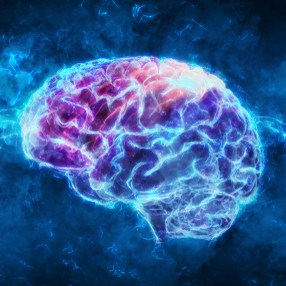What are the types of dizziness and what do they mean?
When a patient complains of dizziness, what is he or she actually experiencing? Distinguishing between the four types of dizziness will help inform the assessment of underlying causes and treatment.
The four most common types of dizziness are:
- Ataxia
- Near-syncope
- Vertigo
- Syncope
Ataxia is an inability to maintain balance and a steady gait. As such, ataxia presents when walking or standing, but not while lying down or sitting. Near-syncope is a vague sensation of lightheadedness or a sense of “sinking.” Patients may feel light-headed, like he or she might pass out.
However, if the patient actually lose consciousness, this would be a “syncopal episode.” Finally, vertigo is a sense of rotational movement, with either the room or the head “spinning.” It is almost always accompanied by nausea and exacerbated by movement. Vertigo and near-syncope are the most common diagnoses when a patient presents with “feeling dizzy.”
What follow-up questions can NPs ask to distinguish between vertigo, ataxia, and syncope?
Patients may not provide all of his or her symptoms upfront. It is essential for NPs to ask follow-up questions to help elicit details that patients do not think of or consider relevant. Important questions to help clarify dizziness include:
- What happens when you walk? Do you feel like you are leaning to one side or the other? (Ataxia)
- Does it happen in any position, walking, standing, etc.?
- Is there a sense of spinning? (Vertigo)
- What do you do to feel better when this happens? (If the patient lies down or puts their head between their legs and feels better, that would be near-syncope. In the case of vertigo, this would only increase nausea.)
- Did you pass out? Was there a passage of time? (It is important to confirm the patient actually passed out (i.e. had a syncopal episode) because they may think they passed out or almost passed out, but didn’t actually lose consciousness.)
What are the symptoms of ataxia?
Ataxia is the inability to maintain balance and a steady gait. Usually, balance and coordination are first affected. As a result, the patient will only be symptomatic in an upright position and while walking. However, there are other symptoms of ataxia that will occur later on. These include:
- Loss of fine motor coordination: Is the patient dropping things? Having trouble picking up small objects? Feeling like their hands don’t work right? Noticing changes to their handwriting?
- Slurred speech: Dysarthria is a neuromuscular phenomenon of muscle fatigue, so keep patients talking to make an assessment.
- Difficulty swallowing: This usually comes much later in neuromuscular disease.
What are the different types of ataxia?
Both hereditary and spontaneous forms of ataxia exist. Hereditary ataxia can come in the autosomal dominant form of Spinocerebellar ataxia (SCA). SCA may present late in the lifespan, as there is a bimodal distribution of age at diagnosis with peaks in the 20s and 60s. NPs should refer suspected cases of SCA to neurology to confirm the diagnosis and then to physical therapy. Additional neurological symptoms of SCA include:
- Cognitive defects
- Neuropathy
- Extrapyramidal features
One hereditary form of ataxia that is autosomal recessive is Friedreich’s ataxia, which often presents very early in life, causes wheelchair dependence, and has a life expectancy of 35 years.
Sporadic ataxia is a diagnosis of exclusion after you have ruled out other neurologic findings, including spinocerebellar ataxia. This has an adult-onset with no fine motor skill problems, no cognitive dysfunction, and no family history. NPs should refer patients with sporadic ataxia to physical therapy.
Finally, transient ataxia is a short-lived phenomenon due to insult to the cerebellum. This can be caused by:
- Alcohol and drug intoxication are leading differentials
- Central nervous system infections (viral, meningitis, Creutzfeldt-Jakob disease)
- Metabolic imbalance
- Abnormalities in the parathyroid hormone
- Vitamin E malabsorption
There are also a number of medications that can produce ataxia, including:
- Antiepileptics
- Dextromethorphan
- Fibric acid derivatives
- Metformin
- Levodopa
- Methotrexate
- Thiazide diuretics
Related: Dizziness, Vertigo, and Syncope: Assessment and Treatment
What is near-syncope?
Near-syncope is the result of transient decreased blood flow to the brain. The patient may describe “dizziness,” a sense of “sinking,” the world going black, or “almost fainting.” In most cases, the patient will feel better when they sit or put their head between their legs and allow increased blood flow to the brain.
Near-syncope can be caused by a number of different problems, so it is important to evaluate the patient to determine the underlying cause.
- Cardiogenic: Can be the result of aortic stenosis, arrhythmia, or less commonly, hypertrophic cardiomyopathy. May come on abruptly or from a change of position, and may include palpitations.
- Neurocardiogenic, AKA vasovagal syncope: Caused by abrupt widespread vasodilation, which may result from emotional or physiological distress.
- Neurological, AKA a seizure: It has a distinct presentation from other forms of near-syncope in that it can happen in any position.
- Psychiatric: Redirection of anxiety, depression, or some other condition. This will be clear once you get the history, do the physical examination, check the med list for diuretics, and nothing makes sense. It will likely be a co-morbid psychiatric diagnosis. Treatment requires the management of the underlying condition. Refer to psychiatry.
What is vertigo?
Vertigo can come in two forms: primary vertigo is a sense of oneself spinning, and secondary vertigo is a sense of the room spinning. It can occur in any position and is often accompanied by other symptoms. In most cases, vertigo can be managed within the primary care setting. It will not require diagnostic testing or a referral. Usually, the patient’s history and presenting symptoms will be enough to make a diagnosis.
Related: FHEA on YouTube: Primary Features of Vertigo
What causes vertigo?
Vertigo is the cardinal symptom of vestibular disease. More often than not, it is caused by an inner ear problem. For this reason, it is essential to rule out other systemic or metabolic causes including:
- Medications (antiepileptics, sedative-hypnotics, narcotic analgesics, antibiotics especially fluoroquinolones and gentamycin, and salicylates)
- Psychogenic
- Infection (bacteria sinusitis)
- HypoxiaRelated: FHEA on YouTube: Diagnostic Evaluation of Vertigo
How can NPs distinguish between central vertigo and peripheral vertigo?
85% of vertigo cases are peripheral. In half of these cases, the cause is benign paroxysmal positional vertigo (BPPV). Less common causes of peripheral vertigo include vestibular neuronitis, Meniere’s disease, labyrinthitis, and traumatic or perilymphatic vertigo.
Of note: The more acute and profound the onset of vertigo, the less concerning the underlying inner ear etiology. Central vertigo tends to sneak up, so if a patient describes a vivid and swift onset of the event, it is likely peripheral.
What are the main symptoms of peripheral vertigo?
- Never continuous, can be a matter of seconds or minutes, and then the patient will get breaks from it.
- Virtually always exacerbated by head or body movement or position changes.
- Associated symptoms include:
- Hearing loss
- Pain in the ear
- Tinnitus
What is central vertigo?
Central vertigo is much less common and can indicate a more serious underlying central nervous system phenomenon. It can be caused by cerebellar disease (lesion, tumor, insult, etc). Less commonly, it can be a symptom of brain stem ischemia, multiple sclerosis, or vascular disease. Even though these causes are not common, it is important to keep these in mind to catch the diseases early.
Associated symptoms of central vertigo include:
- Becoming “clumsy” or “uncoordinated”
- Transient visual loss or diplopia
- Transient sensory loss
- Nausea
- Dysarthria
- Focal weakness
To learn more about vertigo evaluation techniques and pharmacologic interventions and earn CE hours, check out our online course on Dizziness, Vertigo, and Syncope: Assessment and Treatment (free with Passport Membership).






